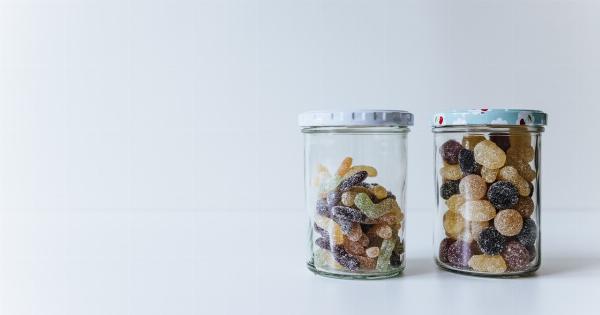According to the American Heart Association, heart disease is the leading cause of death among men and women in the United States. A heart attack occurs when blood flow to the heart is blocked, which can cause lasting damage to the heart muscle.
It is crucial for heart attack survivors to make changes to their diet and lifestyle to improve their chances of survival. Eating a heart-healthy diet can help reduce the risk of further heart problems. Here are some foods that can improve heart health and boost survival odds after a heart attack:.
1. Oily Fish
Oily fishes such as salmon, mackerel, and sardines are rich in omega-3 fatty acids, which have been shown to reduce the risk of heart disease. Omega-3s help lower triglycerides, reduce inflammation, and prevent blood clots.
Eating oily fish at least twice a week helps reduce the risk of another heart attack or stroke.
2. Nuts and Seeds
Nuts and seeds such as almonds, walnuts, and chia seeds are a great source of unsaturated fats, fiber, and protein. These nutrients can help lower cholesterol levels, reduce inflammation, and improve heart function.
Eating a handful of nuts or seeds as a snack is a great way to incorporate them into your diet.
3. Fruits and Vegetables
Eating a diet rich in fruits and vegetables has been shown to reduce the risk of heart disease. Fruits and vegetables are a great source of vitamins, minerals, antioxidants, and fiber.
They can help lower blood pressure, reduce inflammation, and improve heart function. Aim for at least five servings of fruits and vegetables per day.
4. Whole Grains
Whole grains such as brown rice, quinoa, and whole wheat bread are rich in fiber, which can help lower cholesterol levels and reduce the risk of heart disease.
Eating whole grains instead of refined grains such as white bread and pasta can also help control blood sugar levels and reduce the risk of type 2 diabetes.
5. Legumes
Legumes such as beans, lentils, and chickpeas are a great source of protein, fiber, and minerals. Eating legumes can help lower cholesterol levels, reduce inflammation, and improve heart function.
They are also an affordable and versatile ingredient that can be used in a variety of dishes.
6. Low-fat Dairy
Low-fat dairy products such as milk, yogurt, and cheese are a great source of calcium and protein. These nutrients are important for maintaining strong bones and muscles.
Eating low-fat dairy products can also help lower blood pressure and reduce the risk of heart disease.
7. Olive Oil
Olive oil is a great source of monounsaturated fats, which can help lower cholesterol levels, reduce inflammation, and improve heart function. It is also rich in antioxidants, which can help protect the body from damage caused by free radicals.
Use olive oil as a primary source of fat in cooking and as a salad dressing.
8. Green Tea
Green tea is a great source of antioxidants, which can help protect the body from damage caused by free radicals. Drinking green tea can help lower cholesterol levels, reduce inflammation, and improve heart function.
Aim for at least two cups of green tea per day.
9. Dark Chocolate
Dark chocolate is a great source of flavonoids, which can help lower blood pressure, reduce inflammation, and improve heart function. Eating a small amount of dark chocolate (at least 70% cocoa) per day can help keep the heart healthy.
However, it is important to eat dark chocolate in moderation as it is high in calories.
10. Water
Drinking enough water is essential for maintaining good health. Water helps maintain blood volume, regulate body temperature, and transport nutrients throughout the body. Aim for at least eight glasses of water per day.
Conclusion
Eating a healthy diet is essential for boosting survival odds after a heart attack. Incorporating these foods into your diet can help reduce the risk of further heart problems and improve overall heart health.
It is also important to avoid foods that are high in saturated and trans fats, salt, and sugar. A heart-healthy diet, combined with regular exercise and a healthy lifestyle, can help reduce the risk of heart disease and improve overall quality of life.


























